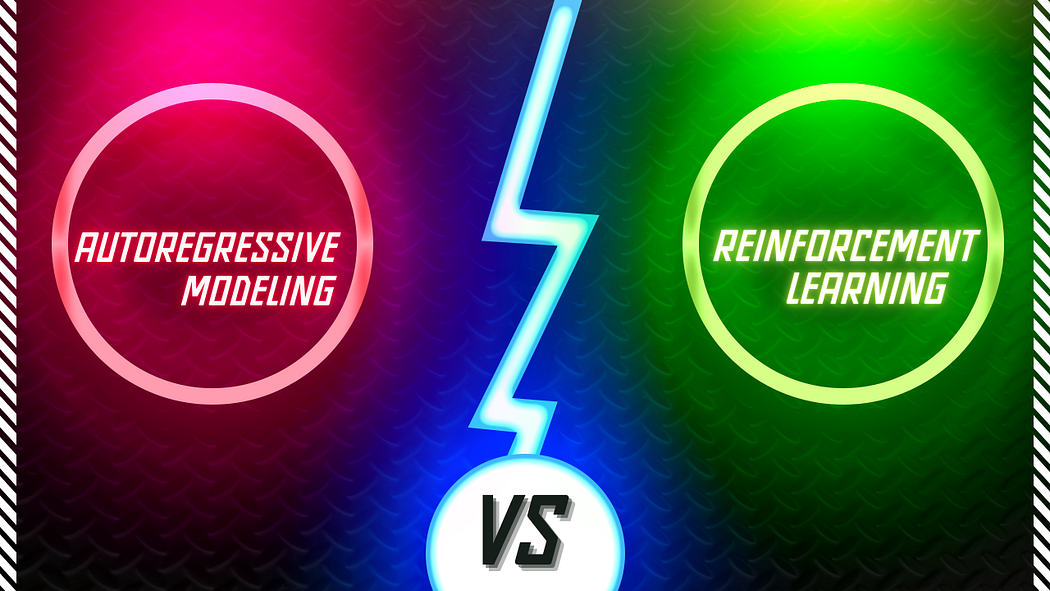If you’ve ever been curious about the difference between autoregressive modeling and reinforcement learning, you’re in the right place! Let’s break it down in a way that’s easy to digest.

Autoregressive modeling and reinforcement learning are both key players in the AI world, but they serve different purposes and operate in distinct ways.
Autoregressive modeling is a general modeling approach focusing on generating sequential data, While Reinforcement Learning (RL) is more about a training algorithm.
Autoregressive Modeling focuses on generating sequential data. It is similar to a method for predicting future values based on what has come before. In the realm of machine learning, this often means predicting the next element in a sequence, like forecasting the next word in a sentence based on the words that came before it. For example, in transformers, which are popular AI models, they predict the next token by considering all the previous tokens.

The beauty of autoregressive models is their flexibility — they can be implemented using various architectures, including transformers. However, it’s important to note that while transformers can handle autoregressive tasks, they’re also capable of non-autoregressive tasks.
Take ChatGPT, for instance! It uses an autoregressive approach for text generation, predicting each word one at a time, shaped by the context of all the previous words it has generated.
Now, let’s move to the Reinforcement Learning (RL). This is a different concept. It’s all about how an agent learns to make decisions by interacting with an environment. The agent takes actions based on its current understanding of the situation and receives feedback — either rewards or penalties — from a reward function designed for this purpose. When we mention Reinforcement Learning with Human Feedback (RLHF), we’re talking about incorporating feedback collected from human input to refine the agent’s learning process.
The agent uses this feedback to discover the best strategy for maximizing its reward over time.

So, what set them apart?
- Learning approach : Reinforcement learning RL involves dynamic environments where the agent learns through trial and error/fail, while autoregressive models learn from static datasets.
- Output Generation: Autoregressive models generate sequences in a step-by-step manner based on prior data, while RL focuses on maximizing long-term rewards through a series of actions.
- Feedback Mechanism: Feedback comes from comparing predictions to actual outcomes in the case of autoregression. While in RL, feedback comes from rewards received from the environment based on actions taken.







No comments :
Post a Comment